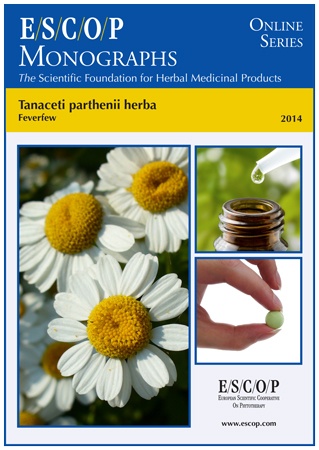 Tanaceti parthenii herba
Tanaceti parthenii herba
Feverfew
Tanacetum parthenium (L) Schultz Bip.
Published 2014
Format: PDF
 Online viewing (for only €30 per year, you can view online all the monographs)
Online viewing (for only €30 per year, you can view online all the monographs)
SUMMARY:
The herbal monograph selects and summarises scientific studies and textbooks regarding efficacy, dosage and safety to support the therapeutic uses of feverfew.
This herbal drug by definition consists of dried, whole or fragmented aerial parts of Tanacetum parthenium (L.) Schultz Bip.
Studies with its main characteristic constituents sesquiterpene lactones e.g. parthenolide are included.
The therapeutic indication is the prevention of migraine headaches. Administration of feverfew addresses dosage, duration of use; contra-indications; special warnings; special precautions for use; interactions with other medicinal products; other forms of interaction; use during pregnancy and lactation; its effects on ability to drive; undesirable effects; overdose.
In vitro experiments with parthenolide and feverfew extracts demonstrate anti-inflammatory activity and inhibition of serotonin secretion.
In vivo experiments in animals, using anti-inflammatory test models with feverfew extracts and isolated constituents, suggest a link between parthenolide (and the other sesquiterpene lactones) and migraine prophylactic properties.
Controlled clinical studies in humans suggest that feverfew can prevent migraine.
The Clinical safety data led to the conclusion that there are no major safety problems, in rare cases gastrointestinal complaints and allergic skin reactions may occur.
The selection of literature cited in the monograph is aimed at bringing together relevant information about the possible physiological roles of feverfew and its major constituents.
KEYWORDS:
- Tanacetum parthenium (L) Schultz Bip.
- Tanaceti parthenii herba
- Feverfew
- Migraine prophylaxis